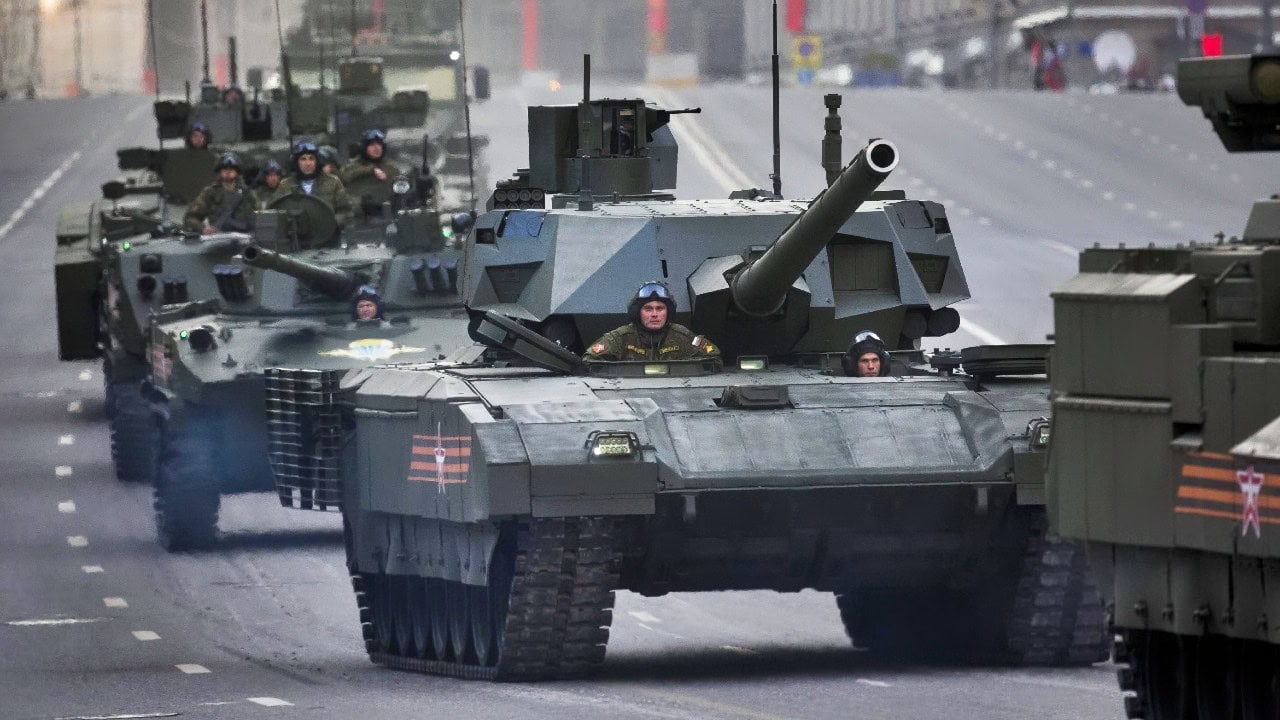Key Points and Summary: Despite Russia’s longstanding boasts about the advanced T-14 Armata tank, the vehicle remains conspicuously absent from combat in Ukraine.
-Rumors of its deployment have proven false or exaggerated. Key reasons for its absence include high costs, incomplete testing, production delays, and the tank’s significant value.
-The Math Problem: Russia initially intended to produce thousands of these tanks but encountered financial and production setbacks, resulting in limited availability.
-The Kremlin fears losing an Armata to enemy hands, compromising valuable technological secrets. Analysts increasingly doubt the project’s future viability, suggesting Russia may prioritize cheaper, proven models like the T-90 during the ongoing conflict.
Why Russia’s T-14 Armata Tank Is Missing from Ukraine’s Battlefields
The Russians have long boasted about the T-14 Armata, the newest and most technologically advanced tank in Russia.
But for all their bluster, they have little to show, despite the T-14 being in development for almost two decades now
The question arises, if the Armata is as advanced and capable as the Russians say it is, why aren’t they using it in Ukraine right now? Several factors may explain why Russia is hesitant to use its supposedly “super tank” in combat.
Has the T-14 Been to Ukraine Already?
In 2022, rumors began circulating from Russian sources that the T-14 was indeed being used in combat. The rumors were fed by videos reportedly showing the Armata performing combat operations near the frontlines.
But the source was questionable to say the least. The rumors originated from Soloviev, a channel infamous for spewing misinformation. Furthermore, the videos that reportedly showed the T-14 in combat were revealed to be from training grounds inside Russia, nowhere near the front lines.
The running narrative is that Russia briefly tested the T-14 in Ukraine and then almost immediately pulled them from the frontlines.
But there is no evidence to indicate that the Armata was ever in Ukraine at all, and even if it was tested in Ukraine, it is unlikely that the tank was stationed anywhere near the frontlines.
Why isn’t the T-14 Armata Tank in Ukraine?
One would think that surely at some point the Russians would want to send the T-14 Armata to Ukraine for propaganda purposes.
Well, Rostec CEO Sergei Chemezov in a 2024 interview refuted the possibility of the Armata ever being sent to Ukraine. The primary reason, he said in the interview, was due to the tanks’ high cost. “Armata is, in general, a little expensive,” Chemezov explained. “In terms of functionality, it is, of course, much superior to existing tanks, but it is too expensive, so the army is unlikely to use it now [in Ukraine]. It’s easier for them to buy the same T-90s.”
Many have used Chemezov’s words to mean that the Armata project is more or less dead, and that Russia is looking for cheaper options. However, a more charitable interpretation is that the T-14 simply isn’t ready for full combat deployment yet.
“The Armata is a new tank, which has not yet fully passed all trials,” Chemezov added, meaning the T-14 is still a ways off from being ready.
Production Issues
Production issues are likely another big reason the T-14 Armata hasn’t been deployed to Ukraine. Initially, the Russian Army planned to acquire 2,300 T-14s between 2015 and 2020. However, production shortfalls and fiscal constraints pushed this timeline back.
By 2018, the main production run was apparently canceled, and only a limited number of units were produced. As of 2021, serial production had reportedly commenced, but the numbers remained low.
These production challenges have limited the availability of T-14s for deployment. Officials claim that some T-14s have been delivered to the army, but there is no data on how many are currently in service, with estimates being no higher than 20.
Prestige is likely another factor. The Russians have been hyping up the T-14 for years now. If the tank were to enter combat and perform poorly (like pretty much every other tank has in Ukraine), the Russians would lose even more credibility.
Russia has stated that it intends to export the T-14 when it becomes available—a poor performance in Ukraine would hurt its reputation and harm the tank’s chances of receiving export orders.
Too Precious to Lose?
As said, the T-14 Armata is Russia’s most advanced tank. From a strategic perspective, the Russian military should be cautious about deploying the T-14 Armata in Ukraine. The tank’s advanced features, such as its enhanced armor, Afganit Active Protection System, and improved sensors make it extremely valuable.
If the tank were to fall in Ukrainian, and later, American hands, it would be a disaster for the Kremlin.
However, its practical application in combat remains unproven. The Kremlin has cited the tank’s high value as a reason for its limited use, with officials stating that it is “too valuable” to risk in battle. It is worth asking why anyone would develop a tank that’s too advanced to use, but that’s beyond the point.
The Armata is a complex blend of software and hardware. Its loss would be a disaster for Russia.
Is the T-14 Already at a Dead End?
Many analysts are already writing off the T-14 as a dead project. Its lack of use in combat and its abysmally slow production certainly don’t bode well for the tank’s future. To be fair to Russia, however, the country is in its third year of war.
Resources need to be allocated wisely, and tanks need to be churned out as quickly as possible. Russia needs quantity, not quality. The decision to cancel or proceed with the Armata will likely be made after the war is over, but until that time comes, don’t expect to see the T-14.
About the Author: Isaax Seitz
Isaac Seitz, a 19FortyFive Defense Columnist, graduated from Patrick Henry College’s Strategic Intelligence and National Security program. He has also studied Russian at Middlebury Language Schools and has worked as an intelligence Analyst in the private sector.

